This
post was originally published on
this siteOriginally posted at: http://www.nerdfitness.com/
“Whoa! Fahad! You could fit another Fahad in your old pants!”
Not every Nerd Fitness success story comes with a jaw-dropping transformation. But in Fahad’s case, it totally does.
And not only does this story come with the physical transformation of Fahad (duh), but it comes with a mental transformation too. Which, in my humble opinion, is his true BIG win. Fahad’s new frame of mind is the secret to all of his later and physical success.
Even crazier? Fahad’s story has all taken place in the past 6 months! Who knows where he’ll be 6 months from now!
I recently had a chance to interview Fahad, a computer repair technician from Los Angeles, who flipped his internal monologue to create new healthy habits for himself.
Habits that made him drop a few pants sizes….and habits that changed him inside and out.
I’m honored that Fahad’s transformation began with his investment in the Nerd Fitness Academy, our flagship online course and community.
(Quick side note: the NF Academy is currently on sale at 50% off until Thursday, January 17th, so check it out and see if it’s a good fit for you!)
Regardless of whether or not you’re a member of our Academy, I have a huge hunch there will be a ton from this story you can relate to and a lot of lessons you can apply to your everyday life.
Let’s bring in Fahad.
(Pretend like the audience just went wild on a talk show as Fahad walks out on stage.)
How Fahad Transformed by Taking Control of his Life
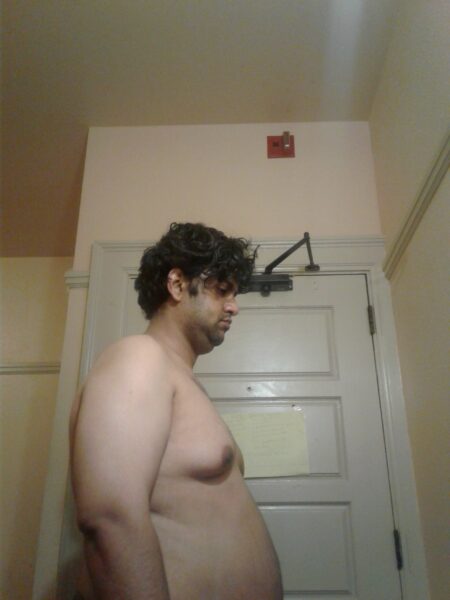 STEVE: Fahad! I was stunned when I first saw your transformation, and I am so dang proud of you sir. You should be very proud of yourself.
STEVE: Fahad! I was stunned when I first saw your transformation, and I am so dang proud of you sir. You should be very proud of yourself.
Can you talk to us a little bit about your background and what a typical day was like for you before you changed?
FAHAD: My normal day was waking up at 8am then heading to work. I’d end up eating a muffin or two for breakfast or sometimes some leftover frozen pizza. At lunch, I would usually go out and eat fast food.
After work, I would eat more fast food. As you can see, fast food was my go-to for nutrition. Only rarely would I occasionally eat cherries or carrots.
My evenings were mostly replaying the same video game over and over, or I’d binge-watch the same anime over and over before falling asleep at 12am.
Then the next day I’d do it all over again.
If I’m being honest, I really only cared for myself to the bare minimum to be able to function in society. I never prioritized my health or well being.
For years and years, I told myself a story: if I can’t do it well or perfect, I shouldn’t do it. This resulted in me being stagnant, and for years and years. Nothing changed.
I then hit rock bottom.
I had a particularly bad, traumatic experience, and knew something had to give.
STEVE: I hear ya. We are creatures of habit, as they say. What changed? What made you embark on your new way of life?
FAHAD: As I said, I really just hit rock bottom and knew something had to give. It was the first time in my life that I decided to start focusing on my health first and foremost. I figured everything else would improve from there. But it had to start with my well being.
My first course of action was going online, as most nerds do. I started browsing the web for fitness programs and stumbled upon Nerd Fitness.
I found your attitude and approach nothing short of fantastic! At last, I had found my people.
STEVE: Heck yeah – that’s exactly why we do what we do! So I have to know – Why not just follow free workouts on YouTube or something? That’s what most people do, and some find success…
What prompted you to make the investment and try out the NF Academy?
FAHAD: I was always a believer in, “If it is worth spending time on, it’s worth spending money on!” So if I was going to invest the time in my health, I should invest the money too.
Also, I knew that I wanted a clear system and not merely workouts.
In other words, I just needed a plan to follow
I browsed the free content to learn about the character and personality of what Nerd Fitness was all about.
When I learned about the NF Academy, the Academy was in my budget, so I took action.
STEVE: We always tell people to focus on the systems in their lives to create and maintain healthy habits. I’m glad the Academy could be such a blueprint for you.
Can you tell me a little about the systems and habits you’ve since created?
FAHAD: The first thing that changed was my nutrition. You really lay it out in the Academy (and throughout Nerd Fitness) that it’s the most important component for weight loss.
So my nutrition changed in a combination of two ways: by eating Paleo-ish and also counting calories.
If I decided to eat something non-Paleo-friendly (a muffin for example) I would count the calories in it and check what nutritional value I got out of it.
When eating Paleo-friendly foods, I would still see how much macronutrients I would get from them! You know, protein, carbohydrates, and fat. Eventually, I began to develop my own nutrition system that became more of a habit.

STEVE: That’s great to hear Fahad! I think it’s so important for people to discover a diet and strategy that works for them.
It sounds like you are sticking to REAL food, and whenever possible, calculating the nutritional value of the meal you are eating.
Talk to me about your workouts – do you go to the gym? Bodyweight routines at home?
FAHAD: Both!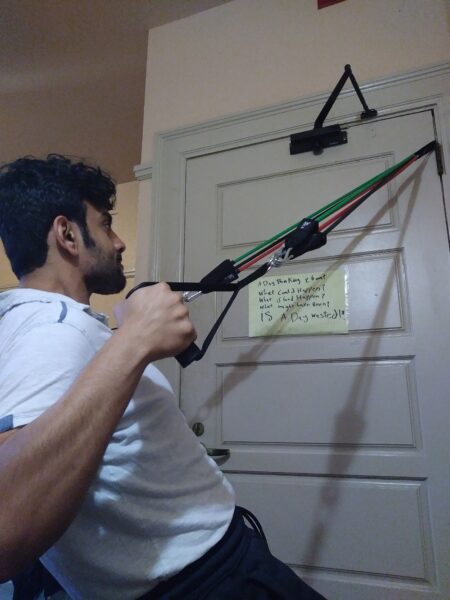
I started by leveling up with the workouts in the Nerd Fitness Academy. When I got to Level 4, I began to heavily focus on compound movement exercises.
Using free weights, I’d work on the “Big 4” (deadlift, squat, bench press, dumbbell or barbell rows). I would also mix things up a little with the occasional pushups or some assisted pull-ups.
If I cannot go to the gym, for any reason, then I would use my trusty friend “the resistance band” to perform similar exercises at home.
This has helped me with the frame of mind of telling myself “NO EXCUSES” when it comes to working out.
STEVE: YES! The “no excuses” piece is a great frame of mind when it comes to fitness. And by not missing a workout – it allows you to keep the streak (and the momentum) alive!
Very well done. Okay, so your weight loss is dramatic and crazy impressive. Obviously, you needed to buy new pants. How much weight have you lost, and how long has it been?
FAHAD: Yeah, I actually used my pants size as an overall metric on how I was progressing.
I used to weigh at least 240 pounds, but I didn’t start weighing myself until a few weeks after I began my journey.
Today (Jan 2019), I come in at 185 lbs! Which is crazy to me.
But again, my pants size alone almost tells the story. I use to wear a size 41, which barely fit and I would squeeze into them. Now I’m a size 34, and even that is starting to feel a little loose.
It should be noted that I started the Academy in August.
When I began, I never seriously considered how long it would take me to reach this level. I didn’t worry about “how fast can I get there” and instead came to the conclusion to prioritize my health for the rest of my life. So each day was just an opportunity to be better.
STEVE: That’s such an important mindset: prioritize the habits you are creating. Don’t focus on the length of time in front of you, but what you can do right now.
What is your internal self talk like NOW compared to 2 years ago?
FAHAD: It centers on hope.
While there are still challenges I must face and many things I need to catch up on, there IS hope! There IS light at the end of the tunnel!
Hope seems to be the basis of my self-talk currently. My success has made me believe that I can improve myself, in any way that I dedicate my time on.
Now, whenever I start to feel the pangs of self-doubt, I look at my before and after pictures. It really works wonders. It springs me back to motivation. So I can go and do other great things!
This has rippled into all areas of my life.
My self-esteem has never been higher. For example, I went and danced in a club for the first time in my life with complete confidence and fearlessness.
STEVE: I’m so happy to hear about your new found self-confidence. When looking at your “after” pictures, a question popped up: you got some style, my dude! Have you always been stylish? Or is that something you’ve worked on since losing the weight and taking care of yourself?
FAHAD: I started caring for my sense of style since the weight loss! It was a lot more than merely losing the pounds though.
I started to develop a constant desire to be at my best in every way possible. Who says nerds can’t look good? After all, why only be good on the inside when you can be good at BOTH the inside AND outside!!
STEVE: Love all of this. Do you have any words of advice for somebody BEFORE you changed, but can’t seem to make any progress?
FAHAD: One of the many reasons people give up on their fitness journey is they simply approach it from the WRONG mindset. For me, success in life came from having a clear system and the discipline to act on that system.
Save yourself the headache that comes from overthinking what you should do next.
Save yourself the heartache of disappointment when you realize that your hard work did not pay off.
And most importantly, save yourself the most precious asset of all: TIME!
Learn from those who have done what you want to do. If they’ve accomplished the results you want for yourself, then so can you! Ask them. Mimic them. Follow their guidance.
You deserve the best for yourself, so give your wonderful body the respect it deserves.
 The Academy was the first (and STILL BEST) investment I ever made on my journey. Not only in physical fitness but other things in my life as well. There are a few key factors in why it helped me.
The Academy was the first (and STILL BEST) investment I ever made on my journey. Not only in physical fitness but other things in my life as well. There are a few key factors in why it helped me.
The private community is nothing short of wonderful and supportive – if you need encouragement, you’ll find it there.
The workouts are strong and intense, and will push you to your limits if you allow it. The nutrition plan is fun and gets you excited about learning new things. I look at a plate of food completely differently now.
Lastly, the mindset chapters are truly life changing! They have been for me anyway.
I have been browsing many self-improvement websites and groups and what Nerd Fitness offers for the price is very reasonable. Do not deny yourself this opportunity to level up your life, you deserve it!!
STEVE: I’m so glad our program was able to help you Fahad. We can’t end without asking you one last question: what’s next? Where do you go from here?
FAHAD: I’ve reached a current plateau on my weight loss. But I’m going to keep going. I want to get to a body fat percentage of about 12 to 13 percent. That’s my goal.
However, my strength training has been going great! It’s my number one priority because I know that if I keep my nutrition habits up, it’ll help with burning body fat. My plan to continue to lose body fat rests in strength training.
I still can’t do a full pull-up quite yet, but I know if I keep working on it, it’s only a matter of time.
STEVE: Fahad, I am 100% confident that a full pull-up will come to you soon. You have the right mindset for it.
Thank you for sharing your story with us. I’m sure your experience will inspire many rebels. You should be very proud of yourself.
The 5 Keys to Fahad’s Success

Fahad’s story is incredible.
As I said in the beginning, the most important thing Fahad changed was his mindset. He knew he had to do something different. So he did. By putting one foot in front of the other. And look what he’s achieved!
After speaking with Fahad, I’ve narrowed down his story to 5 key takeaways that allowed him to hit the ground running and never look back.
If you find yourself like Fahad in the before photo, do what he did, and learn from somebody who succeeded in the way you want to succeed!
Let’s deep dive into why Fahad was victorious where most people fail:
#1 FAHAD TOOK ACTION.
Like many people in life, Fahad really struggled with self-worth, apathy, and just letting life happen to him. After hitting a particularly rough patch, he decided things needed to change.
Fahad knew his negative self-talk was holding him back. His quest for “perfection” meant he never started. Arnold Schwarzenegger said it best: “It’s tough to climb the ladder of success with your hands still in your pockets.”
So Fahad set off on a quest to transform himself and stumbled across our little corner of the internet here at Nerd Fitness.
What set Fahad apart: he found a program he liked, so he stopped worrying about perfection and instead gave it a true attempt.
And then he started. He took action despite the lack of perfection.
He trusted the system, figured he had nothing to lose, and went all in on it. Once he started seeing success based on his actions, his self-confidence grew, which led to him getting even more excited and disciplined.
Instead of a negative downward spiral, he had flipped the script: success begot more success, confidence brought more action, which brought more confidence. And he used momentum in his favor.
Now, when Fahad sees an area of his life that he wants to improve, he knows he can succeed with the right plan: it worked for his health, and he can apply the lessons he learned.
I always tell people the most important step on their fitness journey is starting, by first taking action. Fahad is proof of this. Get started, and build momentum.
#2 FAHAD BUILT HIS ENVIRONMENT TO MAKE EXERCISE AUTOMATIC.
Fahad trained in a gym, which allowed him to embark on a strength training protocol that left him feeling stronger, empowered, and motivated.
As a former skinny weak nerd myself, I can attest to the power of a barbell!
What about when he didn’t have time to go to the gym? This is ingenious on Farhad’s part: he bought exercise bands so he could strength train at home.
The exercise itself is important, but not as important as not breaking the streak by missing a workout. In other words – he prioritized momentum by minimizing the friction between him and “I did a workout today.”
Which is brilliant. Because shit will happen. You’ll end up staying late at work. Your spin class instructor will cancel class. Your tire will go flat. Your kid will get sick.
Here’s a perfect example of having a solid backup plan.
Since he was continuing his exercise practice, it was no big deal to walk back into the gym after missing a visit. The workouts stayed constant, no matter what.
In his own words, “NO EXCUSES.”
So be like Fahad, and prioritize the habit, by reducing the steps between you and that activity. Use your environment to your advantage. That way you can take the “no excuses” mentality that Fahad developed.
#3 FAHAD FOCUSED ON THE LONG TERM.
One thing I really love about Fahad’s story is how he didn’t focus on the timeframe. He didn’t stress that his weight loss goals would take months or years.
Instead, he knew it would be a lifelong commitment.
So he never asked “How fast can I lose weight?” and instead asked, “What do I need to do today to be better than yesterday?”
He also knew that food was 80% of the battle, so this is where he put a large part of his effort: Eating REAL food in line with a Paleo-ish Diet. And whenever possible, he tracked what he was eating, understanding the calories and macronutrients to stay in line with his targets.
Knowing all the work that has to go into changing our habits can be daunting, which can mean we’ll never start.
Don’t get sucked into this thought pattern.
Don’t stress about the scale every week. Do what you can today, and then repeat that tomorrow. As I say in the following video, “Don’t think in terms of weeks or months, but instead focus on days and years.”
Focus on taking one step at a time. Don’t think about the all the steps piled on top of each other. Focus on the next step, the next move that you need to take now.
#4 FAHAD CHANGED HIS INTERNAL MONOLOGUE.
Fahad was a man that couldn’t be bothered to care about himself or his health. He drifted through life, had a low self-opinion of himself, and struggled to get anything done.
Maybe you can relate?
To start Fahad made a key mindset shift: he decided he was worthy of living a happy life. That he COULD change, that he was worthy of self-love and compassion.
When life feels out of control, we encourage people to take care of the one thing that is directly IN their control: their health.
Day after day, Fahad put the work in to prove to himself with tiny wins, that he was worthy of transforming and living better. As his weight dropped, and his pants got loose, he started to develop a sense of self-worth and confidence.
Which made him want to exercise and eat better to keep moving in that direction. And he created a virtuous cycle of improvement:
Confidence led to action which led to more confidence, which led to more action.
In our exchange, Fahad let me know he danced confidently at a club recently for the first time.
And you might notice in the photos above: this is a stylish fella! As he lost the weight and realized he needed to buy new clothes, he started caring a bit more about his appearance, applying the same principles to his wardrobe that he had applied to his health:
Learn, apply, improve, repeat!
You can do the same: Use your fitness journey as a tipping point. When you have the confidence to do one thing, move onto another. Keep improving. When one door is open, use it to open another.
- Just touched your toes for the first time? Great! How about trying a yoga practice?
- Did your first pull-up? That’s fantastic. Have you ever thought about rock climbing?
- Feel comfortable in a bathing suit at the beach? Why not try surfing?
Use the self-confidence that improved fitness can provide by also improving other areas of your life. It could be taking a dancing class, hiking a nearby mountain, or inviting a friend to over to cook a meal. Or maybe it involves picking up a barbell.
Let your success act as a springboard to level up other areas of your life. And if you really want to be like Fahad, check out our article on how to dress better as you get in shape!
#5 FAHAD INVESTED IN HIMSELF.
It’s strange, but we often don’t value the things we get for free. However, when we invest our hard earned money on something, we usually take it more seriously.
For example, you’re more likely to apply the lessons you learn in a book you choose to buy yourself than a free book your mom loaned you on self-improvement.
 Fahad understood this. He actually said, “I believe that if it’s worth spending time on, then it’s worth spending money on.” He also said one other thing that I’m super impressed by: he was willing to trade money for time.
Fahad understood this. He actually said, “I believe that if it’s worth spending time on, then it’s worth spending money on.” He also said one other thing that I’m super impressed by: he was willing to trade money for time.
In other words: there are millions of free workout videos and cooking recipe articles and we even have an article on NF called “How to build your own workout.” However, navigating and finding the right path through those things to what works for you is often a series of trial-and-error challenges that can take years of no progress to navigate.
I actually did my own exercise programming for over a decade before finally hiring an online coach, and it’s the best money I spend each month.
Why did Fahad invest in an online course? Why did I hire a coach?
Because there are people out there, who have succeeded in the way you want to succeed. They have done what you want to do. And they will teach you! It’s like a cheat code in a video game: you get to skip past the unnecessary parts, skip the anguish of starting and stopping, and instead have the peace of mind to know you’re following the right path.
Then, all you have to do is the work (which is the tough part, I realize).
But that’s much better than working hard for months, only to realize you were following the wrong plan, right?
I’m honored that he decided to invest in the Nerd Fitness Academy. Once he gained access, he valued the material in there. And he valued the private community that he now had access to.
Your time is valuable, and your money is valuable too. So if you have something that’s important to you, invest in it! Find a coach or a teacher or a course! And actually do the work:
- Want to learn the guitar? Investing in lessons would be a solid plan.
- Interested in learning Spanish? A tutor would be a great decision.
- Want to lose weight or a pants size? Do what Fahad did, and invest in a program that resonates with you. Prioritize it!
I understand not everybody is in a situation to spend disposable income on courses or coaches – that’s totally fine. How else can you invest in yourself? Can you invest your time in improving yourself and learning more? That’s how I started!
After all, we all know “I don’t have time” is a lie, right?
How to be Like Fahad

Fahad’s transformation took 6+ months of determined, focused effort.
On the one hand: 6 months is a good amount of time. On the other, think back to yourself 6 months ago – I bet it only seems like yesterday, right? And how different are you now compared to then?
If you want to be like Fahad, discovering self-confidence through healthy habits, do the following:
- Take action. Today. Even if it’s imperfect.
- Do whatever you need to do to make exercise routine.
- Focus on the long term: not “how fast can I get there.” But “What can I do today?”
- Change your internal monologue. You’re worthy. Now prove it to yourself with small wins.
- Invest in yourself. It’s not what you say is your priority. It’s what you spend your time and money on. So invest in yourself. You’re worth it!
I want you to discover the same self-confidence through success that Fahad has achieved.
I would love for you to email me one day 6 months from now, saying you were inspired by Fahad. Gushing over all the ways you have made changes since reading this article.
Receiving such emails really is why I get up in the morning. That, and Mario Kart.
If you’re in a position to make an investment in yourself, we’d love to have you in the Nerd Fitness Academy. It’s helped Fahad, and over 50,000+ other nerds, level up their lives. I’m proud of it and all the success it has brought to rebels throughout the world. We make it simple to follow along with:
- 7 levels of workout routines you can do at home,
- 10 levels of nutrition,
- Boss battles, quests, and a full leveling system!
- The most supportive community on the internet.
No matter what you decide, I’m glad you’re here and reading this.
I hope you use Fahad’s story as inspiration to take action today. It really does have a compounding effect, rippling through the rest of your life. One day you’re counting calories in a muffin, the next you’re rocking your new clothes on the dancefloor!
Lastly, please leave some words of encouragement for Fahad in the comments! I’m sure he’d love to hear from you and perhaps answer some questions you may have.
For the Rebellion!
-Steve
PS: We’re super proud Fahad joined the Academy! However, we need to state these results aren’t typical or guaranteed. You actually have to do the work. But if you DO the work, and focus on the right things, 6 months from now you could be in a very different place.
PPS: If you’re somebody that wants somebody to check your form, teach you how to exercise correctly, build a workout program that fits YOUR busy schedule, and even helps you make better food choices, we have a really popular Online Coaching Program! It’s the next level of investing in yourself here at Nerd Fitness.
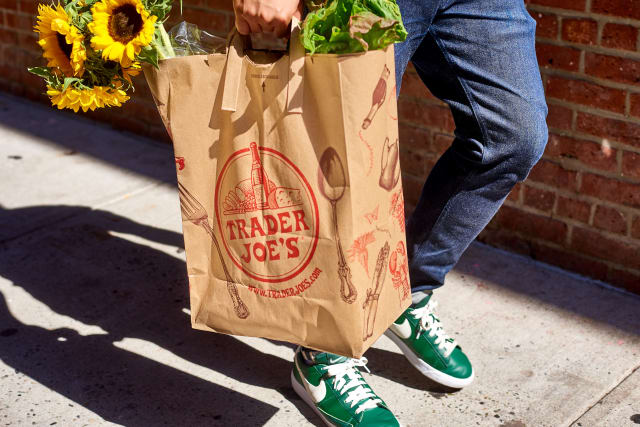

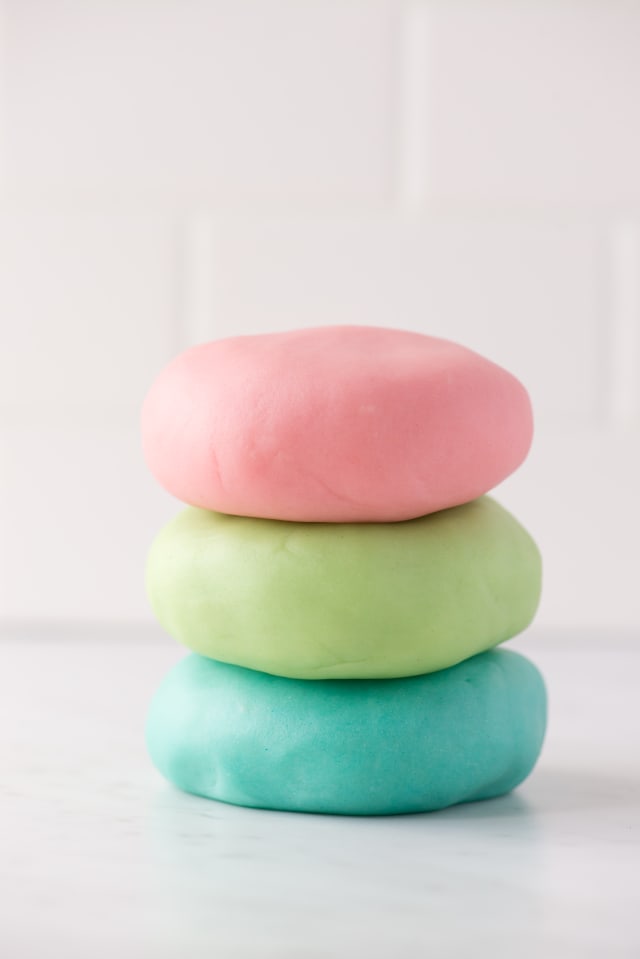
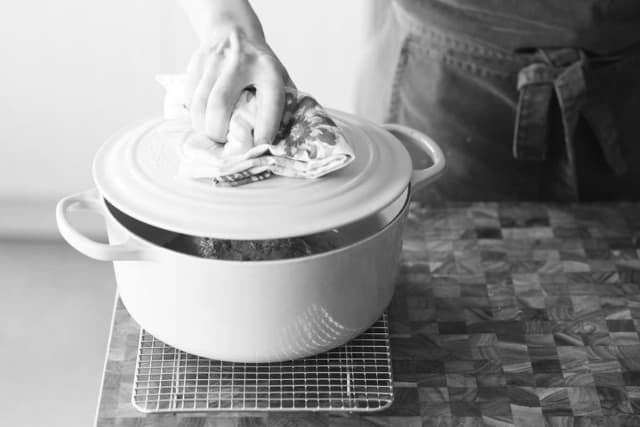


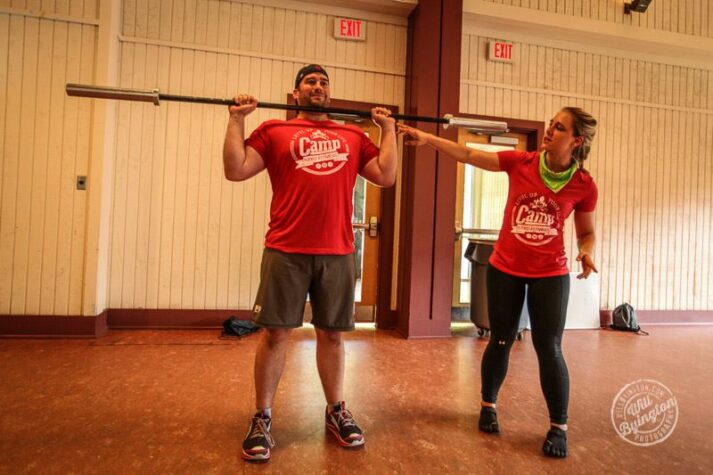

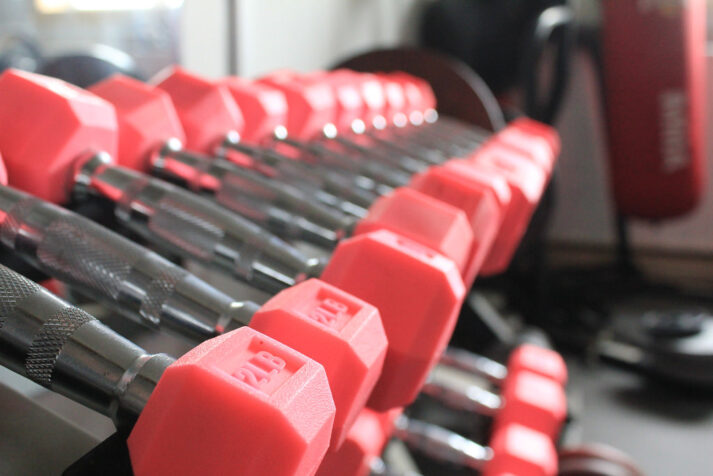

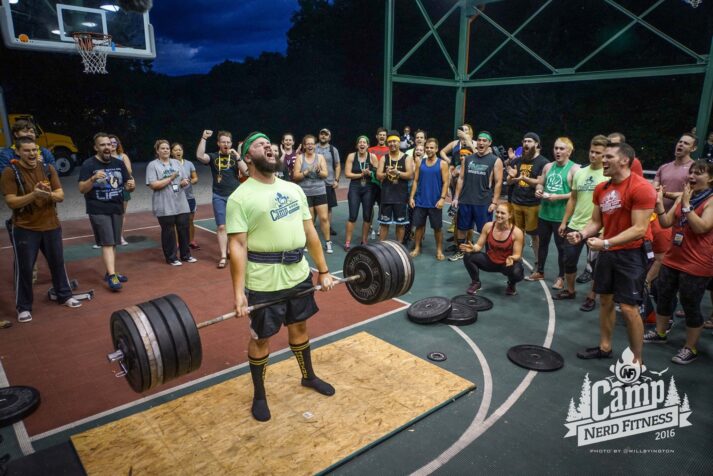

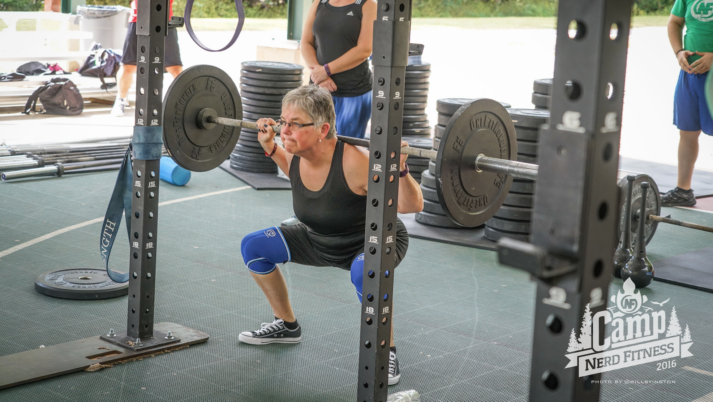
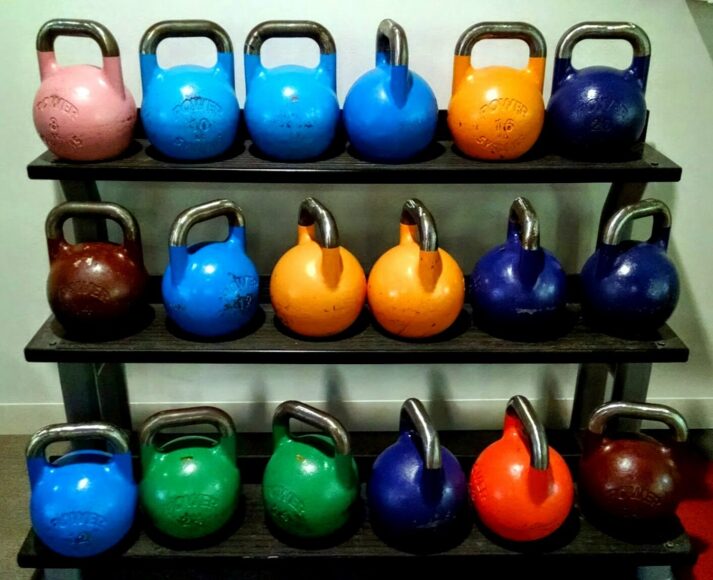
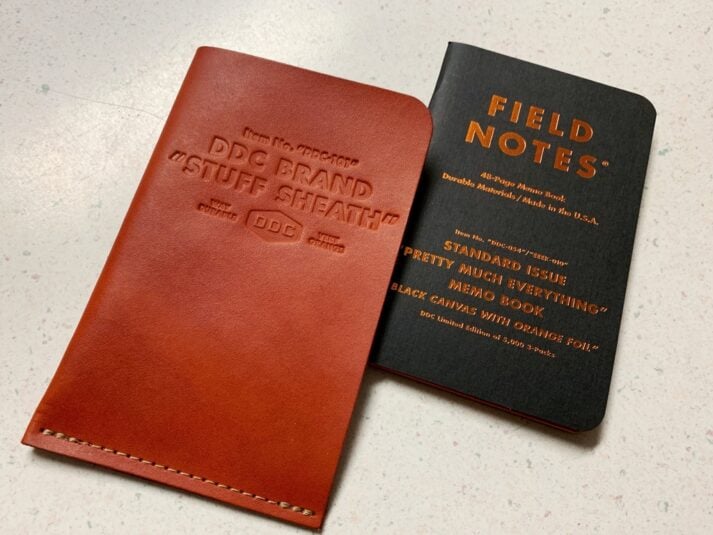
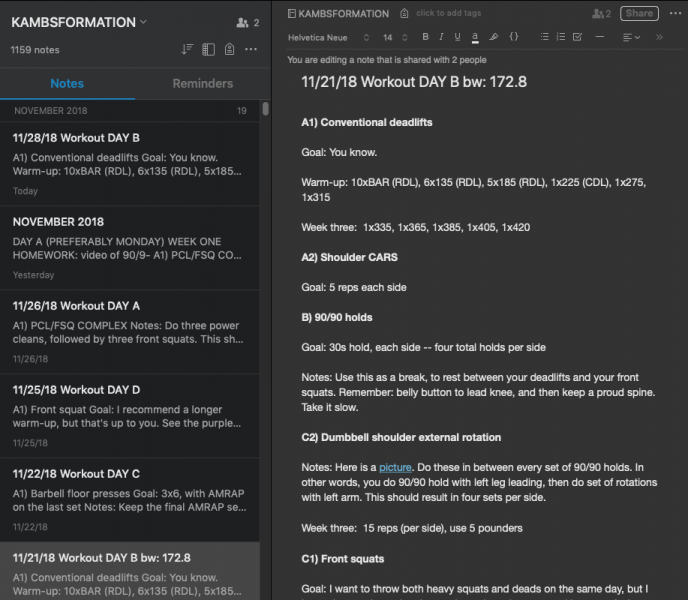
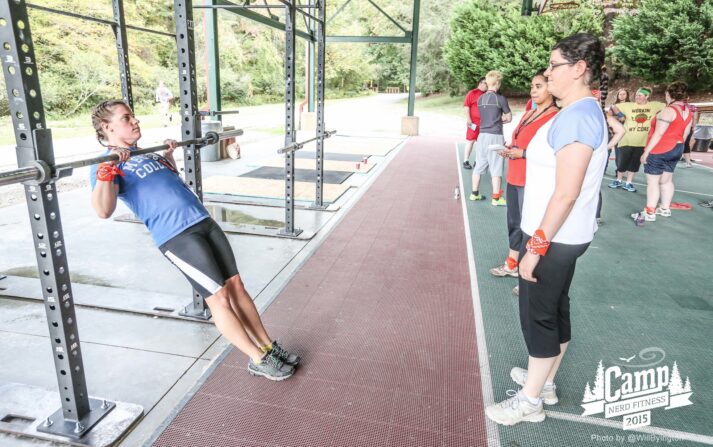
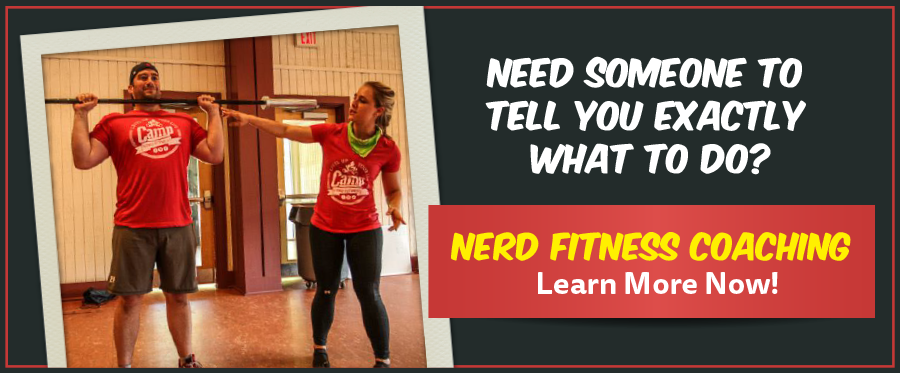






 STEVE: Fahad! I was stunned when I first saw your transformation, and I am so dang proud of you sir. You should be very proud of yourself.
STEVE: Fahad! I was stunned when I first saw your transformation, and I am so dang proud of you sir. You should be very proud of yourself.


 The Academy
The Academy
 Fahad understood this.
Fahad understood this. 


 For now classes are 6pm and 640pm at 2840 Wildwood st in the Boise Cloggers studio.
Book your class NOW!
click this ==>
For now classes are 6pm and 640pm at 2840 Wildwood st in the Boise Cloggers studio.
Book your class NOW!
click this ==>








